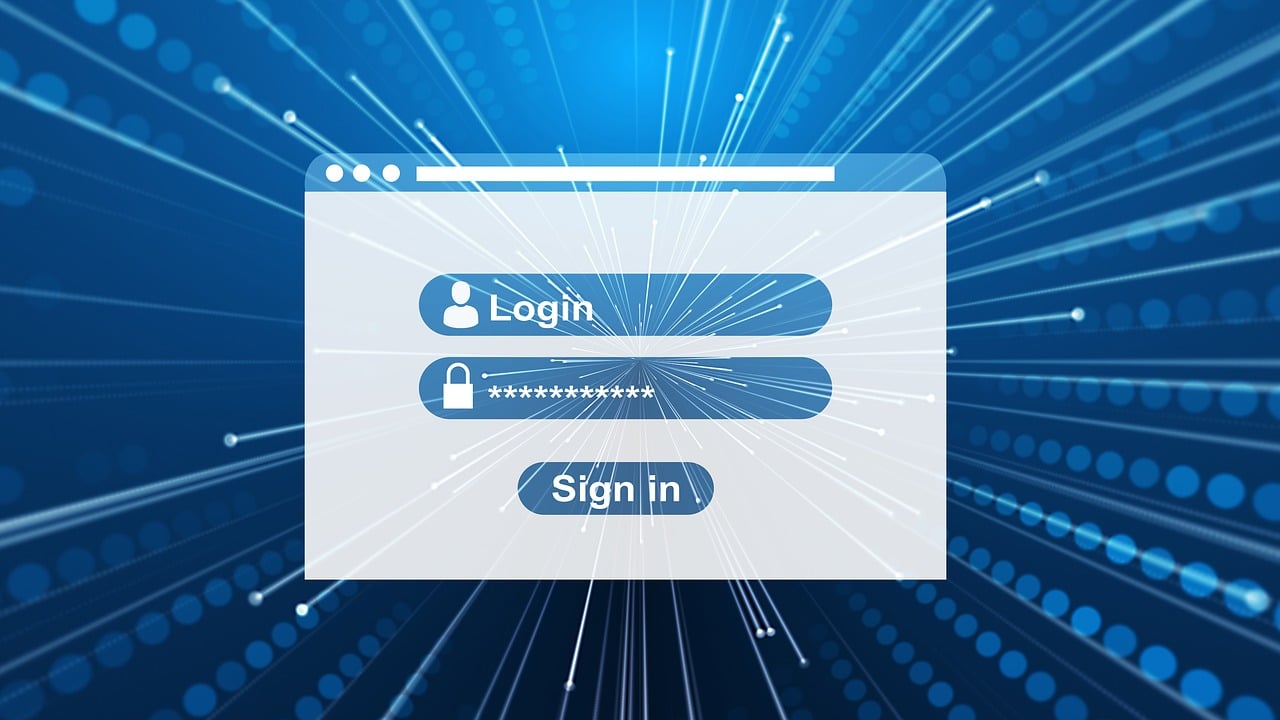Securing sensitive data has become paramount. One of the ways to enhance the security of your computer is by password-protecting your hard drive partitions. This article will guide you through the process of giving a password on a hard drive partition in Windows, ensuring that your data remains safe from unauthorized access.
Table of Contents
Hard Drive Partitioning Overview
Definition and Overview: Hard drive partitioning is the process of dividing a hard drive into separate sections, or partitions. Each partition acts as an independent drive, allowing you to organize data, install multiple operating systems, and manage storage more efficiently.
Before we delve into the process of password protection, let’s briefly understand what hard drive partitioning is. Hard drive partitioning involves dividing a physical hard drive into separate sections, known as partitions, which can be treated as individual drives. Each partition can have its own file system, allowing for better organization and data management.
Importance of Password Protection
Password protection adds an extra layer of security to your hard drive partitions, preventing unauthorized users from accessing your confidential information. Whether you have personal documents, financial records, or sensitive business data, password-protecting your hard drive partitions is crucial to maintaining data privacy and safeguarding against potential threats.
Importance of Partitioning: Partitioning is crucial for optimizing system performance, enhancing data security, and improving the overall management of your storage. It helps in organizing files, separating system files from personal data, and creating dedicated spaces for backups or different operating systems.
Types of Hard Drive Partitions
Primary Partition: A primary partition is a bootable section of the hard drive. A hard drive can have up to four primary partitions, one of which can be set as active to boot an operating system.
Extended Partition: An extended partition is a non-bootable partition that can be divided into multiple logical partitions. It’s used to overcome the limit of four primary partitions on a hard drive.
Logical Partition: Logical partitions are subdivisions of an extended partition. They function like primary partitions but cannot be used to boot an operating system directly.
How to Give a Password on a Hard Drive Partition
There are several methods available to give a password on a hard drive partition. Let’s explore some of the commonly used methods:
Using BitLocker in Windows 10/11: BitLocker is a built-in encryption feature in Windows that allows you to encrypt and password-protect your hard drive partitions. It provides robust security and ease of use for Windows users.
Using VeraCrypt: VeraCrypt is a free, open-source disk encryption software that enables you to create encrypted virtual disks or encrypt entire partitions. It offers strong encryption algorithms and cross-platform compatibility.
Using DiskCryptor: DiskCryptor is another free and open-source disk encryption solution that supports various encryption algorithms. It allows you to encrypt your hard drive partitions effectively.
Using Windows Encrypted File System (EFS): Windows Encrypted File System (EFS) is a feature available in certain Windows editions. It allows you to encrypt individual files and folders, providing a granular level of protection.
Benefits of Hard Drive Partitioning
Improved Organization: Partitioning helps in organizing data by separating system files, applications, and personal files. This organization makes it easier to manage and access data.
Enhanced Performance: By separating system files from personal data, partitioning can enhance system performance. The operating system can access system files more quickly, reducing load times and improving overall efficiency.
Better Data Management: Partitioning allows for better data management by creating dedicated spaces for different types of data. This separation helps in maintaining a cleaner and more organized file system.
Also Read: 7 Ways Technology Is Changing Marketing
Simplified Backup and Recovery: With partitioning, you can create dedicated backup partitions, making it easier to manage and restore backups without affecting the entire drive.
How to set Password on a Hard Drive Partition
Now, let’s dive into the step-by-step process of giving a password on a hard drive partition in Windows:
Checking System Requirements: Before proceeding with the password protection process, it’s essential to ensure that your system meets the necessary requirements. Check if your Windows version supports the encryption methods mentioned earlier, and ensure that you have sufficient disk space available for the encryption process.
Choosing the Right Encryption Method: Based on your preferences and system compatibility, choose the encryption method that best suits your needs. Consider factors such as ease of use, level of security, and compatibility with other devices or operating systems.
Enabling BitLocker : If you opt for BitLocker, follow these steps to enable it:
- Open the Start menu and search for “BitLocker Drive Encryption.”
- Click on the search result to open the BitLocker settings.
- Select the partition you want to encrypt and click on “Turn on BitLocker.”
- Choose between using a password, smart card, or both as your authentication method.
- Create a strong password or insert the smart card if applicable.
- Save the recovery key in a secure location as a precautionary measure.
- Click “Next” to proceed and select whether you want to encrypt the used space or the entire drive.
- Wait for the encryption process to complete.
Setting Up a Password
Regardless of the encryption method you choose, it’s crucial to set up a strong and unique password. Avoid using common phrases, dictionary words, or easily guessable combinations. Include a mix of uppercase and lowercase letters, numbers, and symbols to create a robust password.
Encrypting the Partition: Once you have chosen the encryption method and set up the password, initiate the encryption process. Depending on the method you selected, follow the specific instructions provided by the encryption software. This process may take some time, especially if you are encrypting a large partition or an entire drive.
Verifying Password Protection: After the encryption process is complete, restart your computer and log in using the password you set up. Access the encrypted partition and verify that the password protection is functioning correctly. Ensure that unauthorized users cannot access the encrypted data without entering the password.
How to Partition a Hard Drive
Preparing for Partitioning
- Backup Data: Before partitioning, it’s essential to back up all important data. Partitioning processes can sometimes result in data loss, so having a backup ensures your data is safe.
- Check Disk Health: Ensure your hard drive is in good health by running disk checks and diagnostics. Partitioning a failing hard drive can lead to data corruption and loss.
Using Built-in OS Tools
- Windows Disk Management: Windows provides a built-in Disk Management tool that allows users to create, resize, and delete partitions easily.
- macOS Disk Utility: macOS offers Disk Utility, a built-in tool that provides a graphical interface for managing partitions and formatting drives.
Third-Party Software Options: For more advanced partitioning needs, third-party software like Partition Magic, EaseUS Partition Master, and GParted offer additional features and flexibility.
Best Practices for Secure Hard Drive Partitioning
To enhance the security of your password-protected hard drive partitions, consider implementing the following best practices:
- Regularly update your operating system and encryption software to ensure you have the latest security patches.
- Keep your password confidential and avoid sharing it with anyone.
- Use a reputable antivirus program to safeguard against malware and other threats.
- Create a backup of your encrypted data in case of any unforeseen issues or data loss.
- Consider using multi-factor authentication, such as combining a password with a smart card or biometric authentication, for enhanced security.
Partitioning a Hard Drive on Windows
Accessing Disk Management
- Right-click on the Start button and select “Disk Management.”
- The Disk Management window will display all the drives and partitions.
Shrinking a Volume
- Right-click on the volume you want to shrink and select “Shrink Volume.”
- Enter the amount of space to shrink and click “Shrink.”
Creating a New Partition
- Right-click on the unallocated space and select “New Simple Volume.”
- Follow the wizard to assign a drive letter and format the partition.
Formatting the New Partition
- Right-click on the new partition and select “Format.”
- Choose the file system (NTFS, FAT32, etc.) and click “OK.”
Managing and Modifying Partitions
Resizing Partitions: Use built-in OS tools or third-party software to resize partitions without losing data.
Deleting Partitions: Remove unwanted partitions to free up space or reallocate storage.
Merging Partitions: Combine smaller partitions into a larger one to optimize storage space.
Troubleshooting Partitioning Issues
Common Errors and Fixes: Encountering errors during partitioning can be frustrating. Common issues include disk read errors, partition not found, and insufficient space errors. Ensure you have up-to-date drivers and software to minimize these issues.
Data Recovery Solutions: In case of data loss, use recovery software like Recuva or consult professional data recovery services to retrieve lost data.
Partitioning a Hard Drive on macOS
Accessing Disk Utility
- Open “Finder” and go to “Applications” > “Utilities” > “Disk Utility.”
- Select the hard drive you want to partition.
Adding a New Partition
- Click the “Partition” button.
- Click the “+” button to add a new partition and adjust the size.
Formatting and Naming the Partition
- Select the new partition and click “Format.”
- Choose a format (APFS, Mac OS Extended, etc.) and name the partition.
Common Partitioning Strategies
System and Data Partition: Separate the operating system from personal data to simplify backups and system restores.
Multi-Boot Configuration: Create partitions for different operating systems to run multiple OSes on a single hard drive.
Dedicated Partition for Applications and Games: Allocate specific partitions for applications and games to manage storage more effectively and improve performance.
Partitioning for Specific Needs
SSD Partitioning: Partitioning an SSD can improve performance and extend the lifespan by organizing data efficiently.
Partitioning for Linux: Linux users can create multiple partitions for the root directory, home directory, and swap space to optimize performance and data management.
Partitioning for Gaming; Gamers can create dedicated partitions for games to manage storage and enhance loading speeds.
FAQs on Hard Drive Partition
What is the main purpose of partitioning a hard drive?
Partitioning helps organize data, improve system performance, and manage storage more effectively by creating separate sections on a single hard drive.
Can I password-protect an existing hard drive partition?
Yes, you can apply password protection to existing hard drive partitions using the encryption methods mentioned in this article. However, the process may involve data encryption, which can be time-consuming. It’s advisable to back up your data before initiating the encryption process.
Can I remove password protection from a hard drive partition?
Yes, it’s possible to remove password protection from a hard drive partition. The exact method depends on the encryption software you used. Most encryption tools provide an option to decrypt or remove password protection from encrypted partitions. However, it’s important to note that removing password protection will make your data vulnerable to unauthorized access. Proceed with caution and ensure you have a backup of your data before removing password protection.
Can I partition my hard drive without losing data? Yes, using built-in OS tools or third-party software, you can resize and create new partitions without losing existing data. However, it’s always recommended to back up your data before partitioning.
Also Read: What is code review and How to do a good code review
Can I access my password-protected partition on another computer?
Yes, you can access your password-protected partition on another computer, provided the computer has the necessary encryption software installed and supports the encryption method you used. You will need to enter the correct password to unlock and access the encrypted partition.
How many partitions can I create on a hard drive? A hard drive can have up to four primary partitions, or three primary partitions and one extended partition, which can be further divided into multiple logical partitions.
What happens if I forget the password for my encrypted partition?
If you forget the password for your encrypted partition, it can be challenging to regain access to your data. Most encryption methods have strict security measures in place to prevent unauthorized access, including limited password recovery options. It’s important to keep your password in a safe and secure location to avoid this situation. Consider creating a password hint or utilizing password management tools to assist with password recall.
Is it necessary to partition an SSD? While not necessary, partitioning an SSD can help organize data and optimize performance. Ensure you follow best practices to maintain the SSD’s lifespan.
Can I encrypt multiple partitions on the same hard drive?
Yes, you can encrypt multiple partitions on the same hard drive using the encryption methods discussed in this article. Each partition can have its own unique password for added security. Ensure that your system meets the requirements for encryption and allocate sufficient disk space for each encrypted partition.
What should I do if I encounter errors during partitioning? If you encounter errors, ensure your disk is healthy, update your drivers, and use reliable partitioning software. If the problem persists, consult a professional for assistance.
Conclusion
Password-protecting your hard drive partitions is a vital step in securing your sensitive data. By following the outlined methods and step-by-step guide in this article, you can ensure that your confidential information remains safe from unauthorized access. Implement best practices and stay vigilant to maintain the integrity and privacy of your data.
In conclusion, password-protecting your hard drive partitions in Windows is a crucial step to safeguard your sensitive data. By following the outlined methods and best practices in this article, you can ensure that your information remains secure from unauthorized access. Take the necessary precautions, choose a reliable encryption method, and create a strong password to enhance the protection of your valuable data.
Hard drive partitioning is a powerful tool for managing your storage effectively. Whether you’re looking to organize data, improve system performance, or set up a multi-boot configuration, understanding the basics of partitioning can help you make the most of your hard drive. With the right tools and strategies, you can ensure your data is well-organized and easily accessible.











